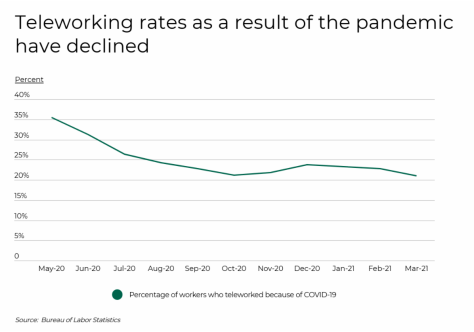The latest surge in COVID-19 cases caused by the Omicron variant once again disrupted an economic recovery that has been uneven to date. While most jurisdictions did not resort to the same sorts of public health restrictions instituted in early 2020, many businesses struggled to operate at full capacity with employees sick due to COVID and many consumers behaving more cautiously. Industries that have been hard-hit throughout the pandemic, like restaurants and airlines, experienced new disruptions heading into 2022.
Economic challenges associated with Omicron and future variants could once again depress consumer spending, piling on top of an unusual decrease in consumer expenditures during the pandemic’s first year. For most of the last 60 years, consumer spending has increased year over year, even during economic downturns. But from 2019 to 2020, overall consumer spending fell by 2.6%, the largest year-over-year decline since the Great Recession.

COVID’s effects on consumer spending have not been consistent across all categories, which means that some industries are struggling more than others. Public health restrictions affecting certain types of businesses and consumers’ shifting preferences from spending more time at home have driven trends in expenditures. In some cases, these factors have created divergent spending trends between similar categories. For example, spending on food services and accommodations dropped by 20.5% from 2019 to 2020, while spending on groceries was up 11.2% over the same period. Similarly, recreation services—which includes businesses like sports venues and theaters—saw the largest overall decline at 28.6%, but recreational goods and vehicles saw the largest overall increase at 13.1%.

In addition to differences by spending category, declines in consumer spending also varied by geography. The region with the greatest drop in spending was the Mideast (including Delaware, New Jersey, New York, Pennsylvania, and Maryland), with a 4.07% decrease from 2019 to 2020, followed by the Far West at 4.03%. In contrast, the Rocky Mountain region had the lowest decrease, with consumers spending only 1.25% less in 2020 than in 2019.

Among states, most of the locations where consumer spending dropped the most were found in the Mideast, Far West, and New England regions. For most of these states, the declines are explained in large part by decreases in spending on recreation services, transportation services, or both. Recreation services were slow to return to full capacity in many locations because they were considered less essential and frequently likely to contribute to the spread of the coronavirus. Areas with high populations of commuters usually relying on vehicles or public transportation, like densely populated areas in the Northeast, saw declines in transportation spending with the greater transition to remote work.
The data used in this analysis is from the U.S. Bureau of Economic Analysis’s Personal Consumption Expenditures. To determine the states with the biggest drop in spending during COVID-19, researchers at Filterbuy calculated the percentage change in per capita consumer spending from 2019 to 2020. In the event of a tie, the state with the lower total change in per capita consumer spending from 2019 to 2020 was ranked higher.
Here are the states with the biggest drop in spending during COVID.
| State | Rank | Percentage change in consumer spending (2019-2020) | Total change in consumer spending (2019-2020) | Per capita consumer spending (2020) | Per capita consumer spending (2019) | Category with the largest decrease in spending |
|---|---|---|---|---|---|---|
| Alaska | 1 | -5.4% | -$2,760 | $48,739 | $51,499 | Recreation services |
| Massachusetts | 2 | -5.0% | -$2,762 | $52,001 | $54,763 | Transportation services |
| Hawaii | 3 | -4.7% | -$2,233 | $45,080 | $47,313 | Transportation services |
| New York | 4 | -4.6% | -$2,416 | $49,735 | $52,151 | Transportation services |
| Minnesota | 5 | -4.6% | -$2,129 | $44,403 | $46,532 | Recreation services |
| Maryland | 6 | -4.4% | -$2,051 | $44,331 | $46,382 | Recreation services |
| California | 7 | -4.3% | -$2,086 | $46,636 | $48,722 | Recreation services |
| Pennsylvania | 8 | -3.9% | -$1,828 | $44,650 | $46,478 | Recreation services |
| Vermont | 9 | -3.8% | -$1,888 | $47,397 | $49,285 | Recreation services |
| Nevada | 10 | -3.8% | -$1,532 | $39,211 | $40,743 | Gasoline and other energy goods |
| North Dakota | 11 | -3.7% | -$1,668 | $43,945 | $45,613 | Gasoline and other energy goods |
| Rhode Island | 12 | -3.7% | -$1,660 | $42,944 | $44,604 | Gasoline and other energy goods |
| Washington | 13 | -3.5% | -$1,647 | $46,041 | $47,688 | Transportation services |
| Delaware | 14 | -3.2% | -$1,526 | $45,434 | $46,960 | Transportation services |
| Florida | 15 | -3.1% | -$1,376 | $43,615 | $44,991 | Transportation services |
| United States | – | -3.0% | -$1,311 | $42,635 | $43,946 | Recreation services |
For more information, a detailed methodology, and complete results, you can find the original report on Filterbuy’s website: https://filterbuy.com/

















